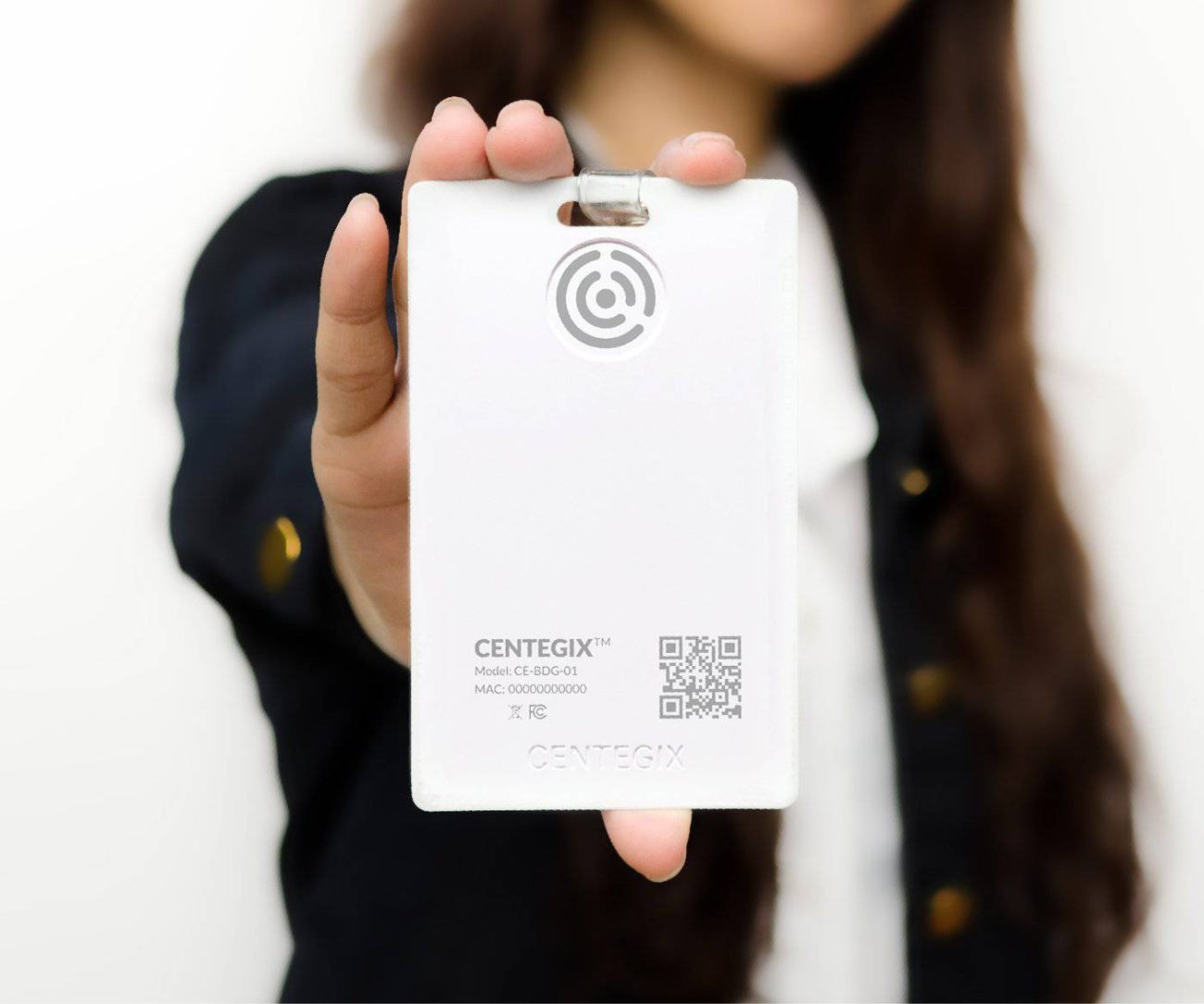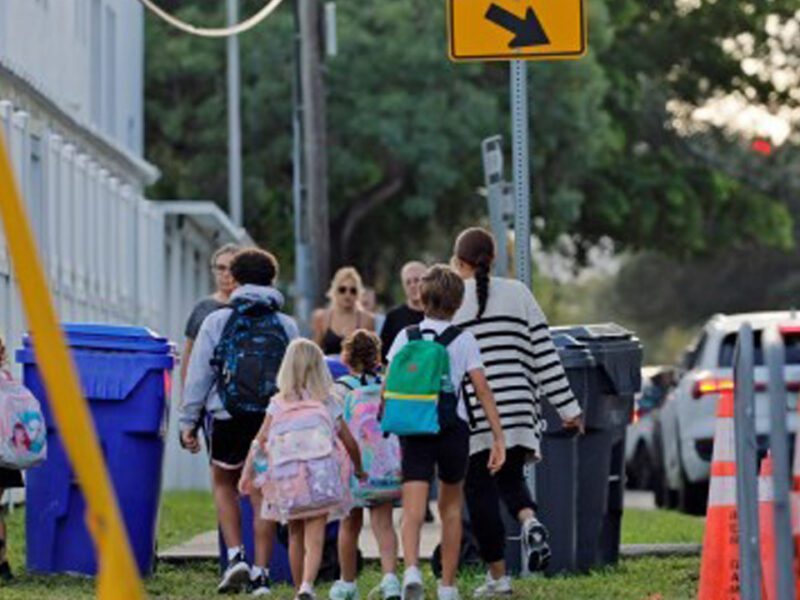Panic buttons are coming to Palm Beach County schools. Here’s what that means.
South Florida Sun-Sentinel | By Natalia Galicza | July 21, 2022
The past four years have led Bridget Hale to consider homeschooling her kids. She hasn’t experienced anything firsthand to make her fear for her budding middle schooler’s and two elementary schoolchildren’s safety in Palm Beach County. But after the 2018 mass shooting at Marjory Stoneman Douglas High School in Parkland and May’s mass shooting at Robb Elementary School in Uvalde, Texas, her anxieties nonetheless climb.
Hale has gone as far as planning out future rescue missions with her family in case her children encounter school shootings. Her three kids, all younger than 12, know their designated extraction points at their respective schoolgrounds. They know their parents are prepared to rush in and retrieve them in an emergency, no matter the danger posed to Hale and her husband — no matter what.
School security, Hale feels, is more urgent now than ever. She is not alone in feeling that urgency.
Last month, the Palm Beach County School Board voted to approve a new school security system equipped with panic buttons for 202 of its schools. The panic buttons will be attached to all school staff members’ identification badges and worn as part of their uniform. They will work in conjunction with the SaferWatch application system, which is already used by the school district.
These panic buttons can issue two types of instant alerts. School alerts notify resource officers and administrators of classroom health or safety issues; emergency alerts can send schools into lockdown and notify sheriff’s offices of larger-scale emergencies like school shootings.
Centegix, the company behind the panic button security system, agreed in a School Board contract to aim for completed installation at a majority of the 202 Palm Beach County schools by Aug. 10.
The system is currently in place at 12 other school districts in Florida. Palm Beach County will be the first school district in South Florida to adopt the system.
“I just feel like I’ve been on guard the last couple of years, and I don’t want my kids to have that anxiety,” Hale said. “I don’t want my kids to, and I don’t want to have to carry that either.”
How it works
Though the partnership between Centegix and the Palm Beach County School Board is likely to be long-term, the panic-button contract is for an initial term of two years. That means there’s time to test it before the School Board applies for a renewal; there are three one-year renewal options, which, if applied, would extend the contract to June 6, 2024.
Palm Beach County School Board documents from a June 15 meeting show that the financial impact to the district’s budget will amount to $2.1 million for the first year and $1.3 million for each successive year.
The total of five years with Centegix would equate to $7.3 million. The source of funds is the Capital Budget and General Fund referendum.
:quality(70)/cloudfront-us-east-1.images.arcpublishing.com/tronc/RKQMUKSMKFHENH6IUPBSDWADSU.JPG)
There are three parts to the system: badges with panic buttons, battery-powered strobe lights, and the hub that receives alert and location information.
“The lights, the intercom, the desktop takeover, the inside location,” said Brent Cobb, Centegix president. “We’re the only ones that bring our own network to those four elements.”
When a panic button is pressed three times, it signifies a school emergency. When a panic button is pressed more than eight times, it sets off a campus-wide emergency: strobe lights go off, the campus announcement system and school desktops are taken over, and the location within the school where the alert was triggered is recorded by the hub to relay to law enforcement.
“When someone presses the panic button on Centegix their data is actually going to be pushed through the SaferWatch platform into the different 911 centers in Palm Beach County,” said Geno Roefaro, chief executive officer of SaferWatch. “When their system is up and running, it will be integrated into SaferWatch. We’re already doing integration right now for them.”
A different approach
The wearable panic buttons are a new approach to upholding Alyssa’s Law, which was enacted in Florida two years ago and took effect at the start of the 2021 school year. The law, named after Alyssa Alhadeff, a 14-year-old student who died in the Marjory Stoneman Douglas shooting on Feb. 14, 2018, mandates that all Florida schools have panic button systems to quietly and quickly alert emergencies to law enforcement.
Centegix is the only company with a wearable school security system out of the 10 school security contractors approved by the Florida Department of Education. The other nine operate through a mobile or desktop application.
Some school district employees in Palm Beach County, Broward County and beyond claim that the digital applications are less effective tools in emergency situations.
“If you needed to send an alert through your cellphone, you would have to actually get your cellphone, unlock it, find the app, find the alert, and then press the alert,” said Francesco Frangella, director of safety and security at the Martin County School District.
Martin County has had the Centegix system in place for more than a year. When Frangella proposed the Centegix system in a School Board meeting in October 2019, he said that “the majority of the staff has declined to install” the application meant for reporting school emergencies. That experience is not exclusive to Martin County.
In the first two months that SaferWatch, Florida’s leading Alyssa’s Law application,became available for download, only 16% of staff in the Broward County School District had it installed on their mobile phones. Many felt wary of looming privacy issues in using a work-related application on a personal device.
Even Eric Garner, a TV production teacher at Marjory Stoneman Douglas who taught on campus the day of the 2018 shooting and witnessed the school’s darkest day firsthand, refused to download at first.
“I understand the trepidation that some teachers have,” Garner said. “My cellphone is my private property. But putting [the application] on my phone means now my phone is part of my work property. And having that responsibility to have your phone on you all the time can be problematic.”
The same reservations are true in Palm Beach County. Justin Katz is president of the Palm Beach County Classroom Teachers Association and taught for 10 years at Park Vista High School in Lake Worth Beach. Katz said the county still issues occasional reminders to teachers to download the SaferWatch application on their mobile devices. Though not required for mobile download, it’s strongly encouraged for emergencies.
“I’ve heard or seen that [the school district] is still sending emails and reminders to teachers until the button cards get there,” Katz said. “The district has encouraged the download for years now.”
SaferWatch’s Roefaro said the number of teachers who have agreed to download the SaferWatch app have doubled or tripled since last year.
But Garner and Katz still believe the addition of a physical panic button could provide extra insurance in the event of an emergency, whether for school staff members who refuse to download a mobile application or for those who are not in reach of a phone the moment tragedy strikes.
Blind spots
However innovative the new technology, it comes with its blind spots.
One is how often or in what cases a staff member might set off an emergency alert. Centegix’s Cobb said the company provides training to the Palm Beach County School District as part of its contract. School Board documents show the total cost of training is $125,500 for the hundreds of sites getting systems. But that training focuses more on how to activate an alert as opposed to when.
Frangella said training for Martin County’s staff took all of five minutes. And the training video uploaded by Centegix on Youtube runs less than four minutes long.
“As far as the emergency alert, the only requirement is that a staff member perceives a threat,” Frangella said. “Never will it be only for a seen weapon. If there is an unknown person on campus that would be an emergency notification.”
For parents like Hale, training of school staff and officers is the most important factor in learning to feel safe again. Especially after she learned of the lack of response time in the Uvalde shooting, where 19 children and two teachers died, Hale said it’s become difficult to imagine a school day without some ounce of risk.
“It just makes you realize nobody’s gonna love and protect your children other than you,” she said. “School should be a safe place. And it’s not. It hasn’t been for a while.”






